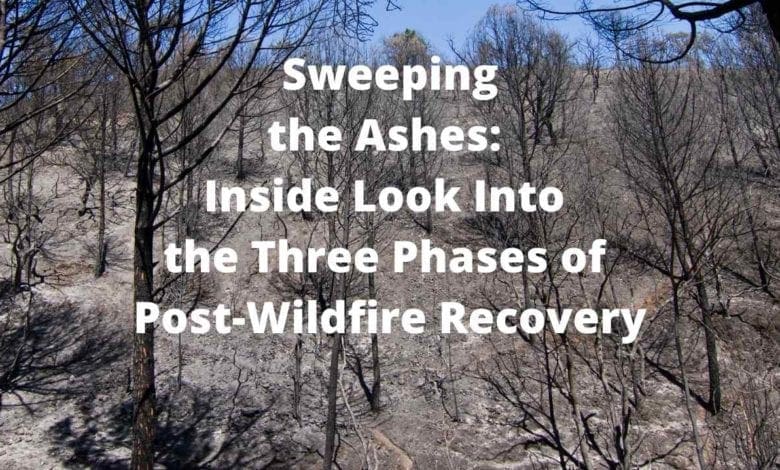Sweeping the Ashes: Inside Look Into the Three Phases of Post-Wildfire Recovery

Climate change is playing an ever-increasing role in the extreme weather conditions we experience every year. One of the most devastating examples of this pattern is the increased frequency, duration, and intensity of wildfires, particularly in the western US. 2020 was a record-setting year in many respects, marking the most extensive season ever with over 57,000 individual fires by December in terms of wildfires.
Fires caused vast levels of devastation, leaving many people homeless and scarring the forests of the west. While wildfire statistics present a total number of acres burned, these statistics do not do justice to unchecked wildfires’ real cost. Beyond the devastating loss of homes, businesses, and infrastructure, wildfires also have many long-lasting ecological effects.
A noticeable effect is decreased air quality as smoke fills the air with fine particulate matter, harming both humans and animals. Wildfires have significant effects on animal populations, significantly reducing woodland species, making it difficult for some communities to spring back. For the hunters, this can result in decreased sporting areas and dangerous terrain.
Proper rehabilitation of burned areas is of the utmost importance to protect people, wildlife, and property after a destructive burn. Implement the three phases of post-wildlife recovery to restore and revitalize natural habitats.
Fire suppression repair
The first step in the fire recovery process begins before the containment of the blaze. During this step, restorative measures are taken to repair damages (such as erosion) directly caused by fire suppression techniques. These efforts focus on staging areas, supply drop points, and fire break spaces such as dozer lines, roads, and trails.
Emergency stabilization-burned area emergency response
After containment, a Burned Area Emergency Response (BAER) team should assemble to assess damages to a burned area. During this time, the BAER identifies post-wildfire threats that immediately endanger property, wildlife, and human life, employing emergency stabilization techniques. During this step, time is of the essence.
As mentioned above, wildfires can have adverse effects on waterways— lead to flooding and increased erosion rates— all of which can cause further damage to an already delicate area. One of the best ways to sidestep unfavorable outcomes in a post-wildfire landscape is to rejuvenate plant-life with the help of a company like Granite Seed. High-quality products can quickly cover the area with native flora to promote revegetation, restore soil, and prevent opportunistic non-native weeds from taking over.
Long-term recovery and restoration
The final step in the fire-recovery process focuses on non-emergency methods of restoration that help affected areas unlikely to recover on their own. During this phase, you should repair structures, implement reforestation projects, eradicate non-native weed infestations, monitor land to ensure healthy growth and recovery. This process can last up to five years and serves as a “bridge” from desolate wastelands to bustling ecosystems and long-term ecological stability.
Wrap up
Though the effects of recent fires in the western US have certainly left their mark, careful planning and restoration can eventually return devastated areas to their former glory. The most important way to aid post-wildfire recovery is to prevent the start of large fires. Although some wildfires start organically due to natural disasters, nearly 85% stem from human activities such as unattended campfires or illegal firework use. It’s crucial to exercise care and prevent devastating fires like those seen in 2020.
